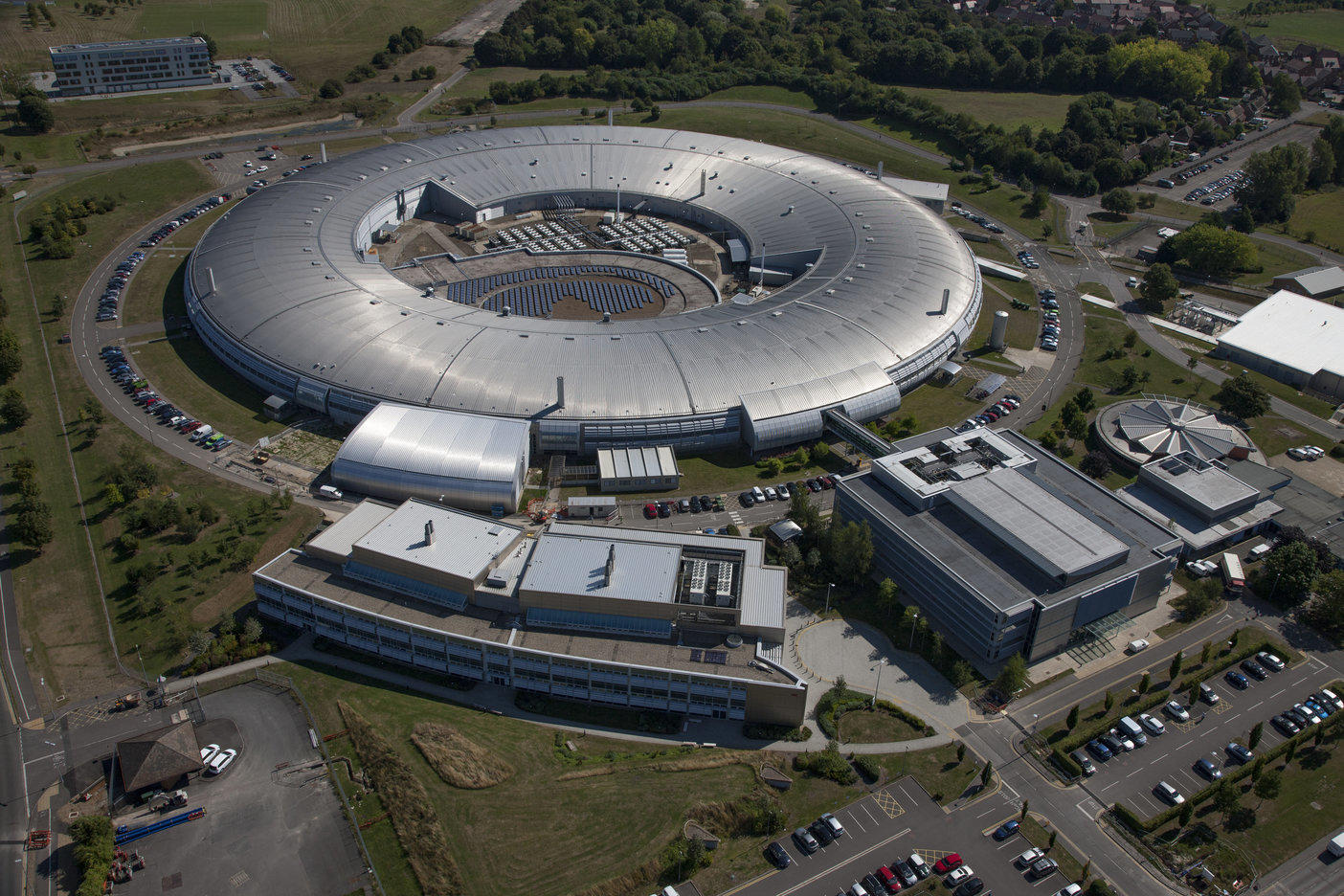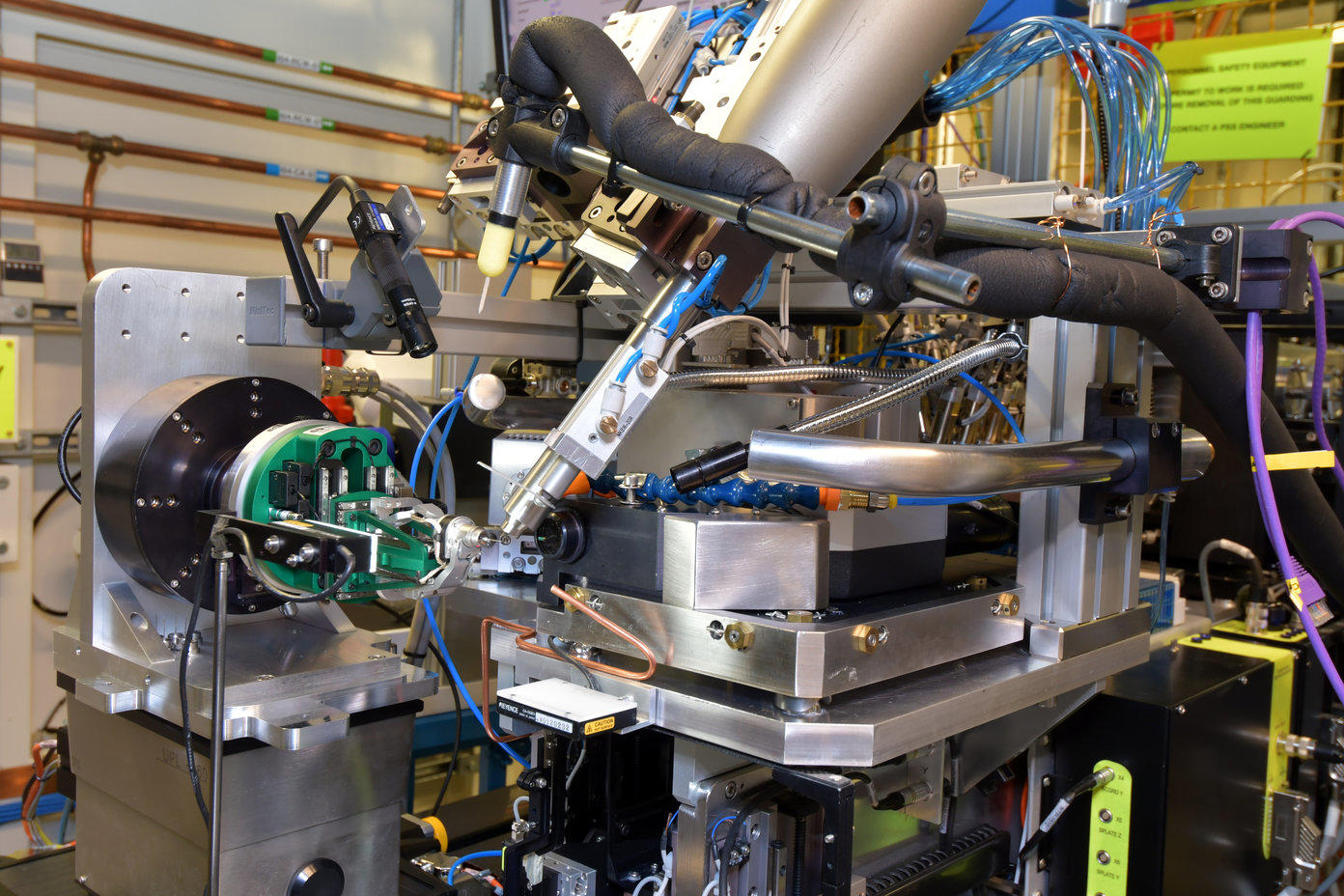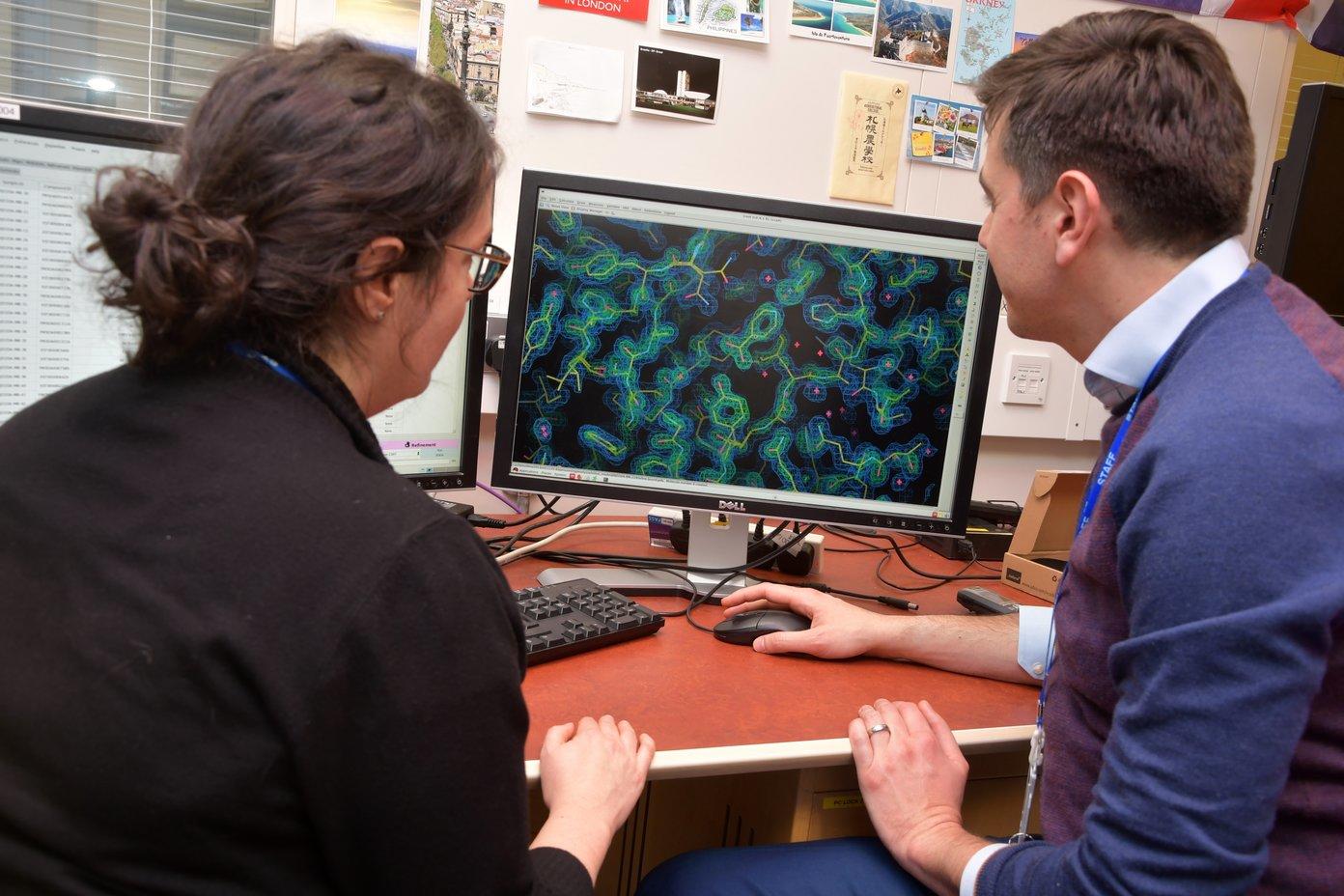Guest Blog|Diamond Light Source
Diamond Light Source is the UK national synchrotron facility, set up as a joint venture between the UK government (through UKRI – STFC) and the Wellcome Trust. Diamond generates infrared, ultraviolet and X-ray beams of exceptional quality and brightness and makes use of these to enable state of the art materials characterisation across a wide range of techniques. The experimental techniques available at synchrotron sources like Diamond are a step above the standard, one might consider them the “Formula 1” of characterisation techniques. They are typically used by scientists who have exhausted the capabilities of lab-based techniques and are searching for analytical tools that are higher resolution, faster, more chemically specific and more sensitive than achievable in a home laboratory.

Located near Didcot in south Oxfordshire, approximately 8,000 scientists from the UK and overseas make use of Diamond every year. Commercial activity plays a very significant role at Diamond and 10% of the facility operation time is dedicated for proprietary use by industrial clients. Clients range from the large multi-national household names through to SMEs and start-ups with 150+ companies worldwide making use of Diamond’s facilities in their R&D programmes by 2018. While clients represent a wide range of sectors, from aerospace engineering through to battery research and with samples as diverse as aerospace alloys, antibodies and chocolate, proprietary use of Diamond continues to be heavily dominated (~75%) by the pharma and biotech industries. We support our pharma clients in all stages of the drug product life cycle from early stage drug discovery through to formulation development, root cause analysis and trouble shooting and even patent litigation.
Structural biology enables scientists to look in detail at the structure and behaviour of cells and their macromolecular components, such as proteins and nucleic acids, enzymes and viruses. Diamond is internationally recognised as a centre for excellence in structural biology research and our synergistic approach teams world leading experts with a wealth of experience with a wide and complementary range of state-of-the-art research infrastructure all under one roof.
We provide clients with access to the very latest generation of electron microscopes and high performance X-ray instrumentation (called beamlines) along with the expertise of our dedicated team of scientists. Our unique integrated structural biology facility enables users to combine a range of approaches using multiple techniques, across one site. So whether your samples are in crystal form, in solution or in their native state, we can help you to determine the best techniques/or combination of techniques to meet your research needs and support you at every step of the process.
Diamond’s world-class macromolecular crystallography (MX) facility provides cutting-edge capabilities to determine the 3D structures of biological targets, at atomic level. It enables pharmaceutical, biotech and agrochemical companies to accelerate the identification & validation of lead compounds, whilst giving a clear picture of the interaction between ligand and its target. This precise information helps to orientate the design of new drug candidates in order to improve their potency and selectivity.

Our instruments incorporate advanced robotic systems with software for automated sample handling, crystal centring and data collection and are continually upgraded as technology advances. In addition, microfocus beamlines are perfectly suited for studying small or challenging samples. Tools for serial crystallography and in situ data collection are in place for users to optimise their research. We have also developed high performance automated processing pipelines for integration, scaling and phasing data in real time for immediate structure analysis.
Fragment-based lead discovery is a drug discovery process that has revolutionised the pharmaceutical industry, providing valuable and cost-effective insights for rational drug design in the early stages. Our fragment screening platform, XChem, is co-located with the I04-1 high throughput MX beamline and provides a streamlined, secure and effective route to highly automated fragment screening campaigns. Screening of up to 700 compounds a day is now achievable, significantly reducing the time to hit identification. Our unique processes, tailored software, and automated systems enable us to record and track data seamlessly from initial crystal cultivation through to data analysis, providing fast, robust and cost effective structural determination.
While X-ray crystallography remains a key tool for the characterisation of macromolecules, small molecules, complexes and ligand binding, complementary techniques such as electron microscopy, and small angle X-ray scattering are increasingly leading to a more complete understanding of the process in question and these techniques are also accessible within our integrated structural biology portfolio.
Recent technology advances have dramatically improved the resolution of macromolecular structures achievable with cryo-electron microscopy (cryo-EM) and seen a rush to adopt the technique in rational drug design and vaccine programmes. The electron Bio-Imaging Centre (eBIC) for Industry is an integrated facility at Diamond providing pharmaceutical and nanotechnology companies with access to state-of-the-art research equipment and expertise in the field of cryo-electron microscopy. Our preparation facilities, dedicated screening and high resolution data collection microscopes, automated data processing systems and expert scientific support provide a comprehensive analytical service, complementary to the other structural biology techniques. A partnership with ThermoFisher (the instrument manufacturers) allows us to jointly offer access to dedicated microscopes for industrial clients. A key advantage of eBIC for Industry is the opportunity to leveraging this powerful technique to solve difficult-to-crystallise and dynamic proteins of therapeutic interest without the need for a large upfront investment in in-house equipment and expertise, lowering the barrier to entry.

Biological small angle X-ray scattering (BioSAXS) is a powerful probe for characterisation of macromolecules and macromolecular complexes in the solution state. The technique is complementary to crystallography and cryo-EM, providing solution state structural information from macromolecules and macromolecular complexes. BioSAXS is particularly useful for examining multi-subunit complexes and conformational changes upon ligand binding and has to date proved very popular for characterising antibody complexes. Additionally access to infrared (IR) and cryo-soft X-ray tomography techniques can provide further information about API interactions with, and subsequent effects on, cells and cellular structures with super high resolution microscopy correlated to 3D high resolution X-ray imaging of cells. Chemical specificity is also addressed using infrared spectroscopy to evaluate influence of chemotherapy on live cells.
Supporting all of these state of the art facilities is the Industrial Liaison Office, comprising a team of highly experienced scientists dedicated to supporting our industrial clients in accessing Diamond. We offer services ranging from full service; a bespoke experimental design, data collection, data analysis and reporting service, right through to providing facilities for you to conduct your own experiments. We’re always happy to discuss any enquiries or talk about ways in which access to Diamond’s facilities may be beneficial to your business so please do give us a call on 01235 778797 or send us an e-mail. You can keep in touch with the latest developments by following us on Twitter @DiamondILO or LinkedIn

Dr Claire Pizzey
Deputy Head of Industrial Liaison
Diamond Light Source Ltd
.png)
.png)